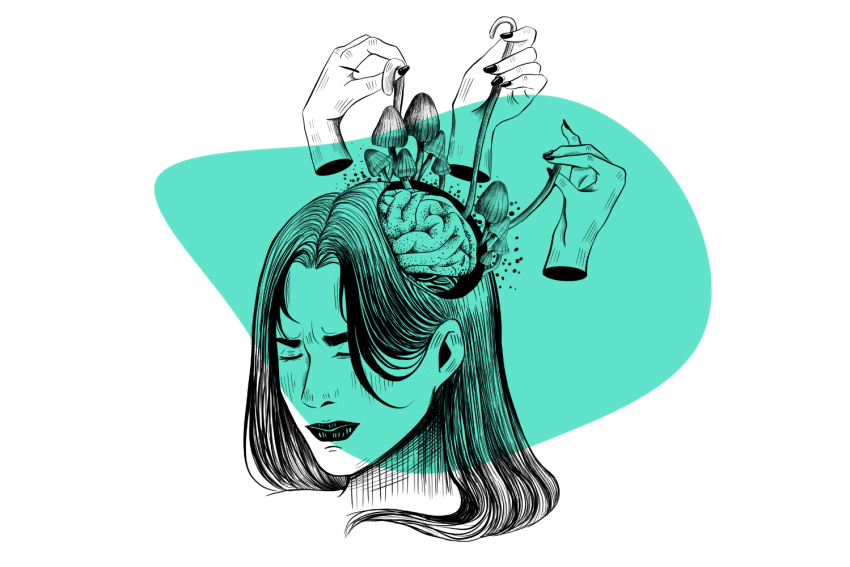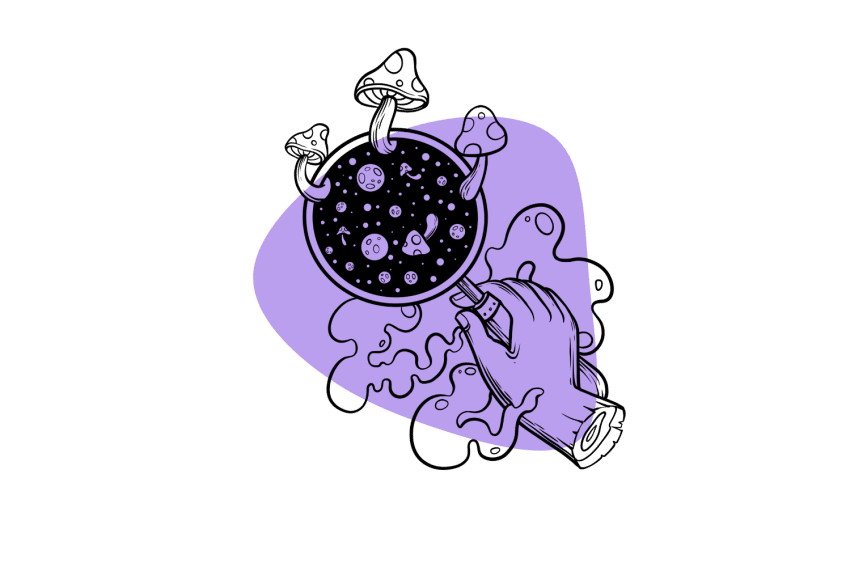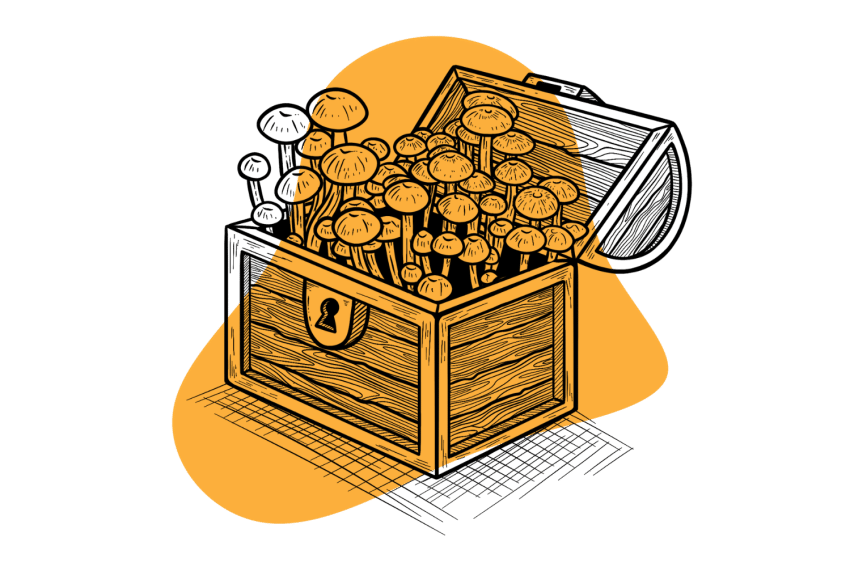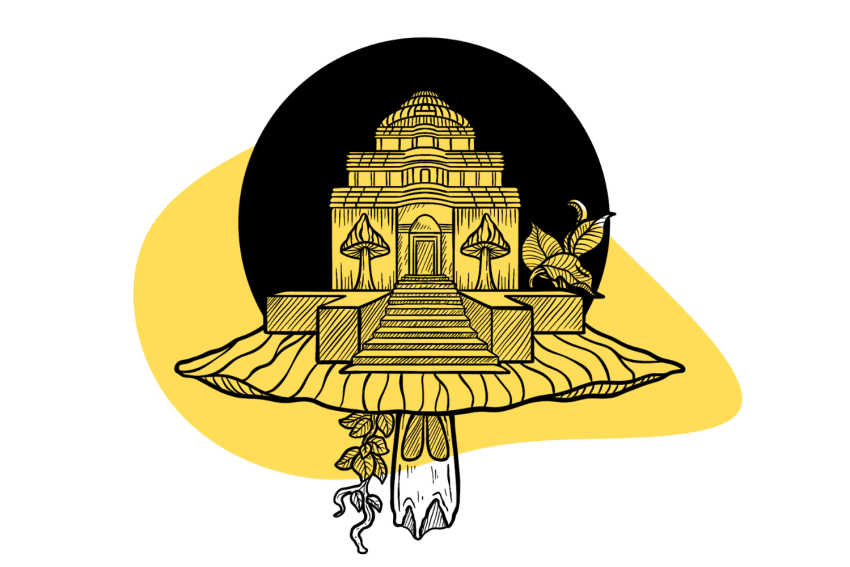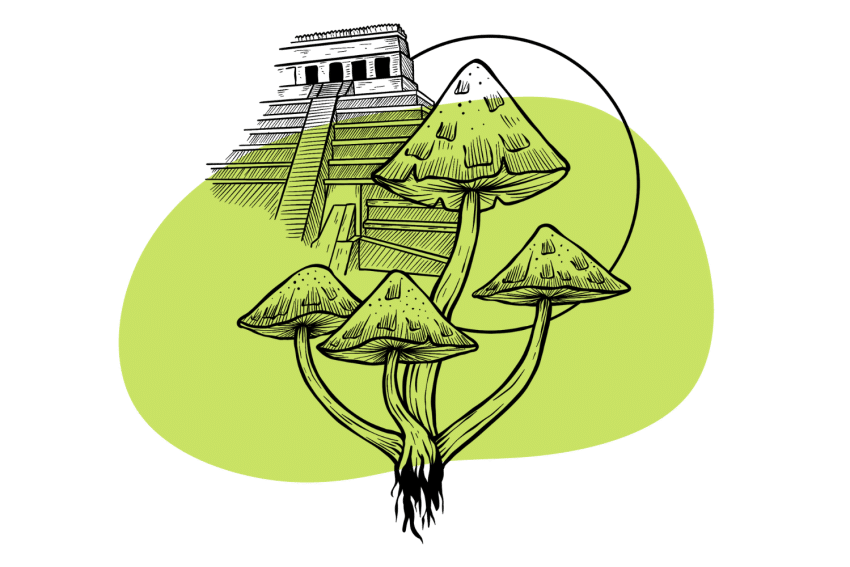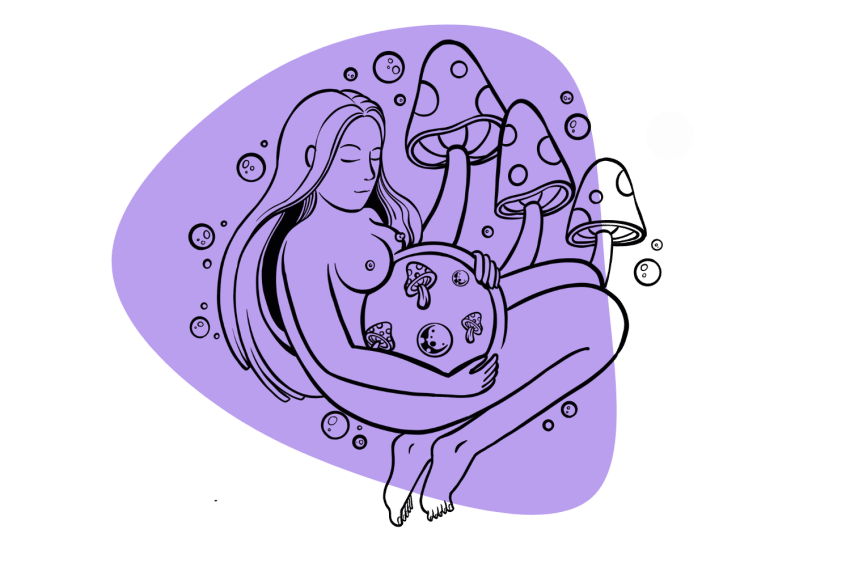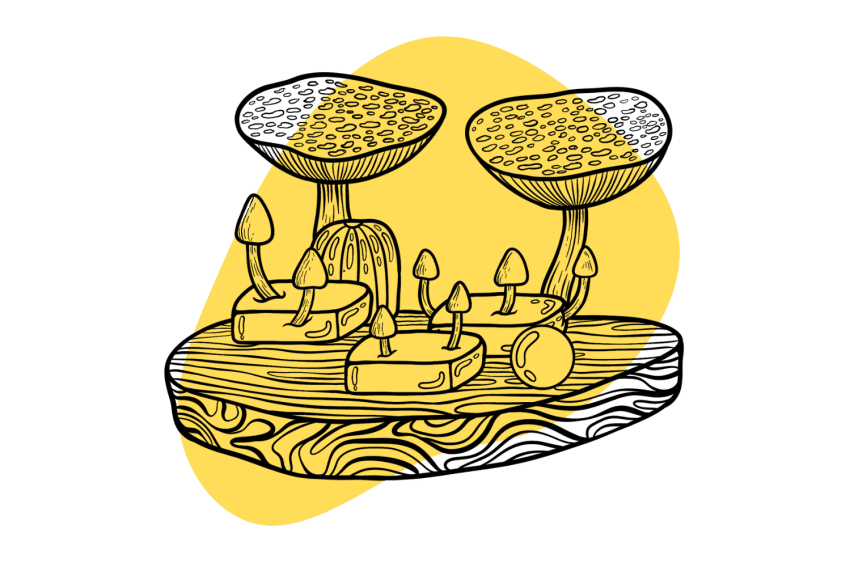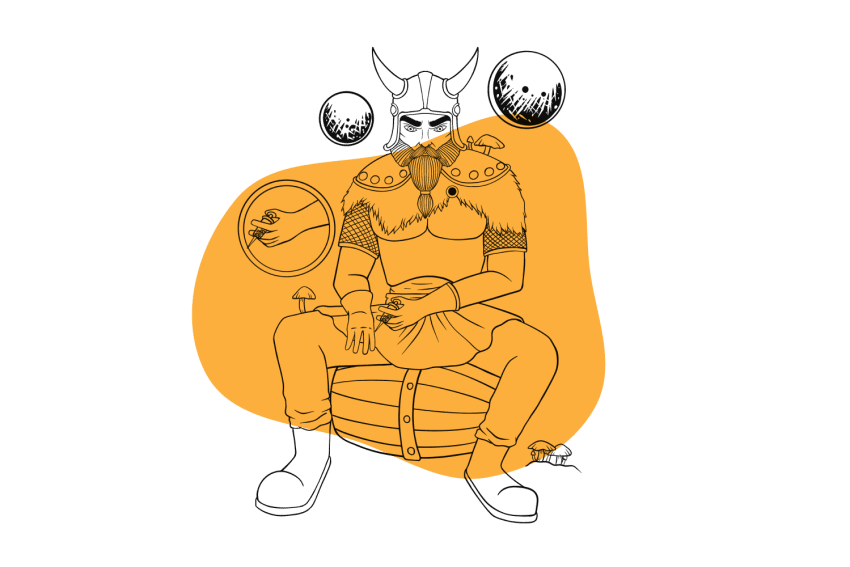From Mild to Wild: The Five Mushroom Trip Levels Explained
For decades, psychonauts have used the five mushroom trip levels to relate their experiences on shrooms. Learn what the levels are and how to get to each one 🚀
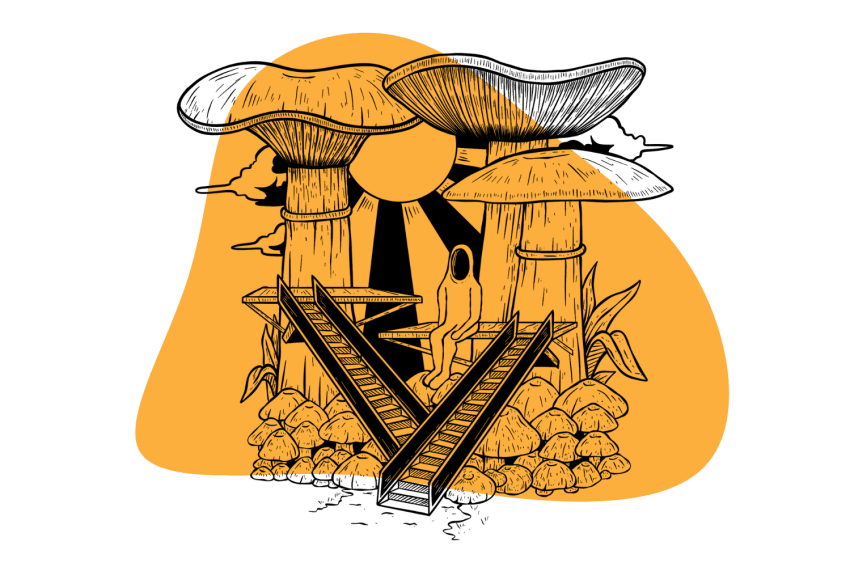
Describing a mushroom trip is more complex than we’d like to admit.
The rainbow fractal light language might make sense to the person undergoing the experience — but putting that experience into words others can understand is no small feat.
Terence Mckenna said it best — “It’s hard to English it.”
Despite this fact — we will do our best to describe each of the five mushroom trip levels (with the help of talented visual artists).
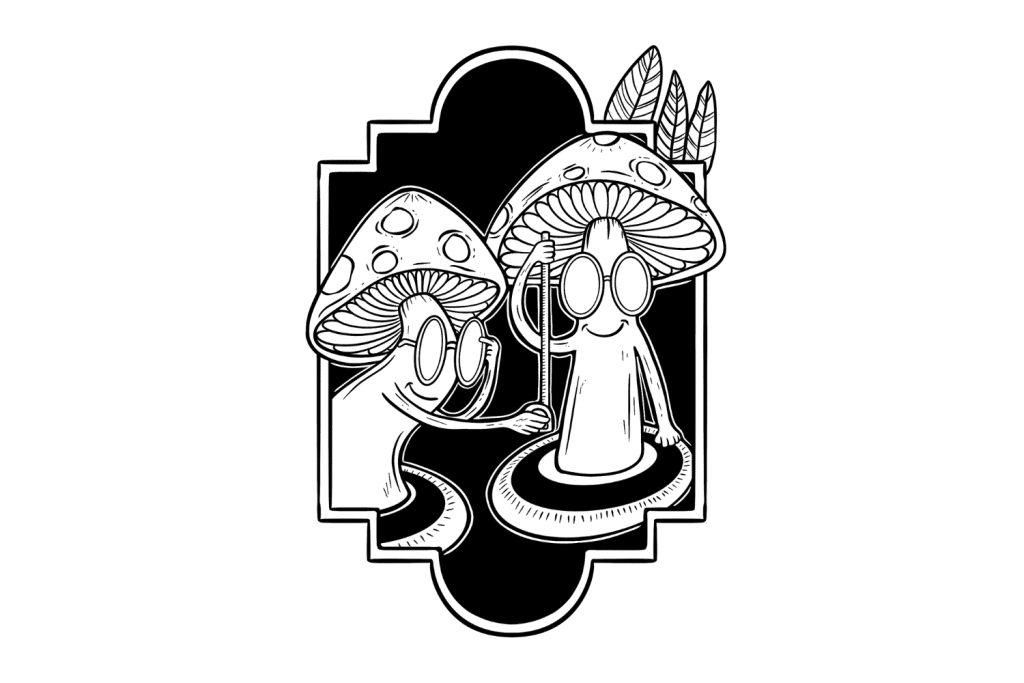
The Five “Levels” of the Psychedelic Experience
One can assume that in the early days of psychedelic use, trippy cave art was how we conveyed our trips to each other.
Since the advent of language and the reemergence of psychedelics into the English-speaking world, we have made some progress (but maybe less than one might expect) in communicating what the heck just happened after the mind-blowing experience of psychedelic mushrooms.
A system for classifying the intensity, known as the “Five Psychedelic Levels” and created by Graeme Carl, has caught on online. Classic online psychedelic hubs like Erowid and Shroomery have been sharing this system for some time.
The original PDF once existed for download (now defunct) on Hyperreal.org.
Since its creation, people have been sharing it extensively around the internet. The specifics of each level have developed as more language and perspectives around psychedelics have emerged.
Below is our adaptation of the original five levels for psilocybin mushroom trips.
Level 1: Threshold
Carl mentions this as a “mild stoning,” with light visuals, such as brighter colors or a slight glow. Other effects include mild euphoria and the potential for slight anxiety.
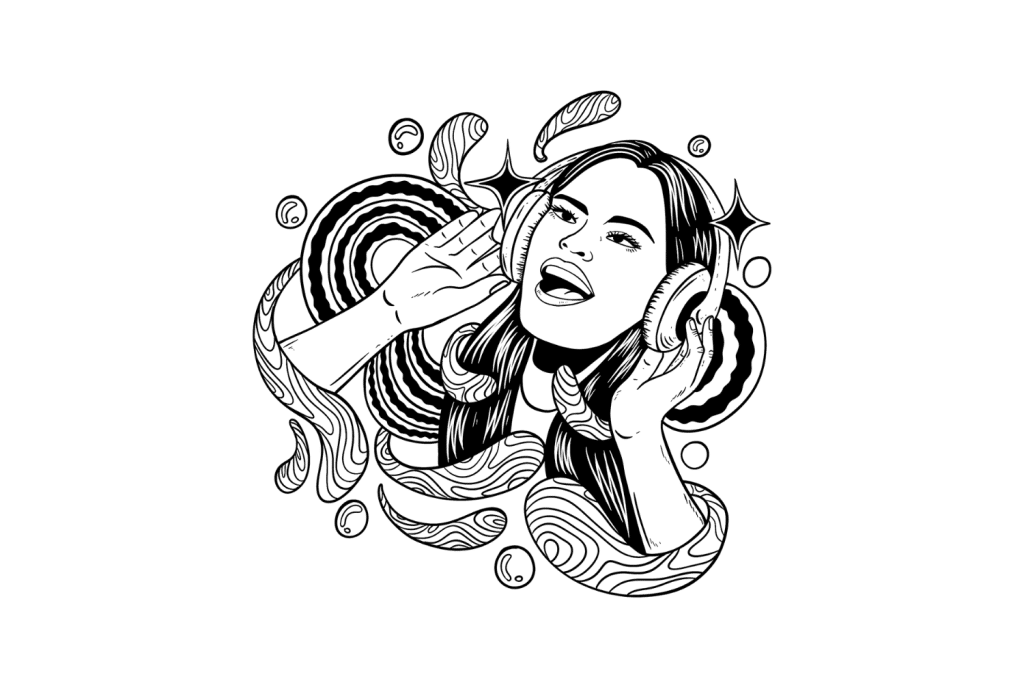
Unique perceptions of music might occur, such as a more expansive, captivating, or immersive quality to the sound.
This level would be above a microdose as the effects are fairly noticeable.
Level 2: Musem Dose
Colors brighten further, and gentle visuals like breathing walls, tracers, or patterns have more movement.
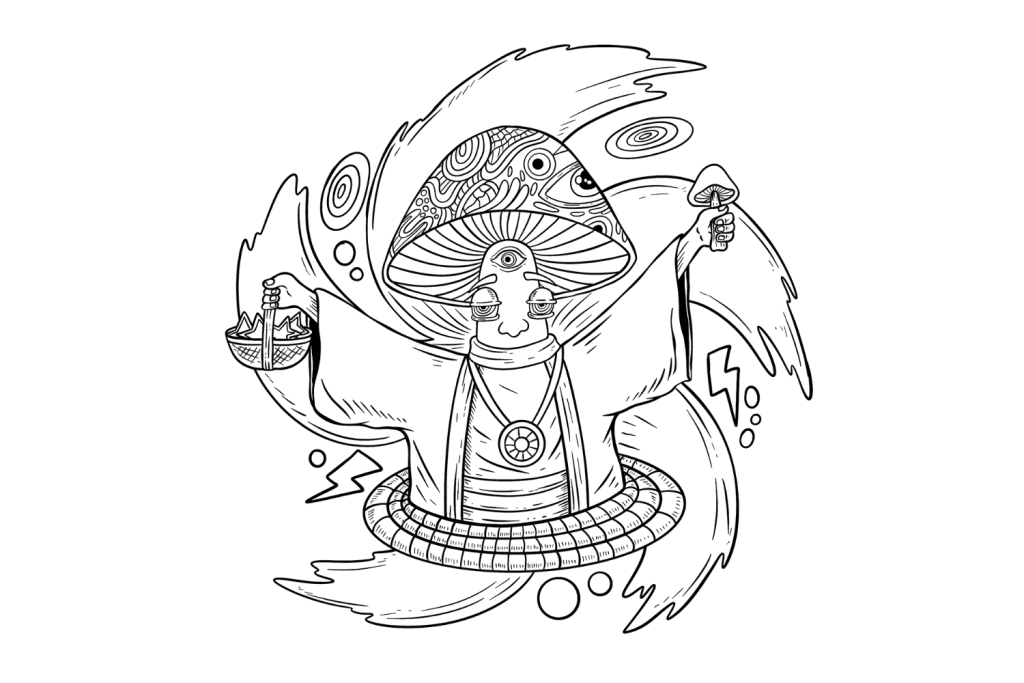
Closed-eye visuals (CEV) are possible but are light. Confusion, reminiscing, euphoria, or insight into one’s inner world may become more apparent at this level. Short-term memory might become a bit scrambled, and one becomes easily distracted.
Carl suggested that increased creativity is more apparent at this level, suggesting the brain “filters” out less sensory data.
Level 3: The Oracle
Here the visuals become more striking. The world may look warped or curved, and kaleidoscopic fractals on surfaces or people can occur with greater complexity and movement. CEVs develop more depth and become a 3D, immersive experience.
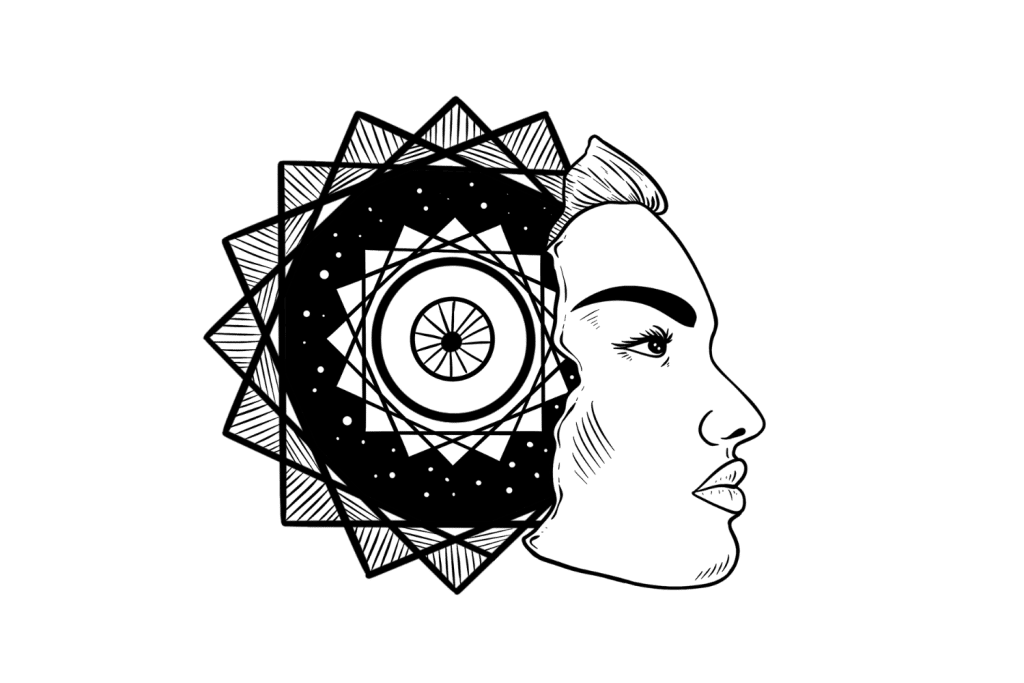
Emotional content and personal insights may be more meaningful and the mystery of life fascinating. The perception of time changes and dilates.
Movement may become difficult, and bouts of laughter and giggles may become hard to control.
Level 4: The Abyss
Visuals get intense. Objects may morph into other objects or appear completely alien. Fractals and synesthesia may become disorienting, and CEVs become another world to journey in.
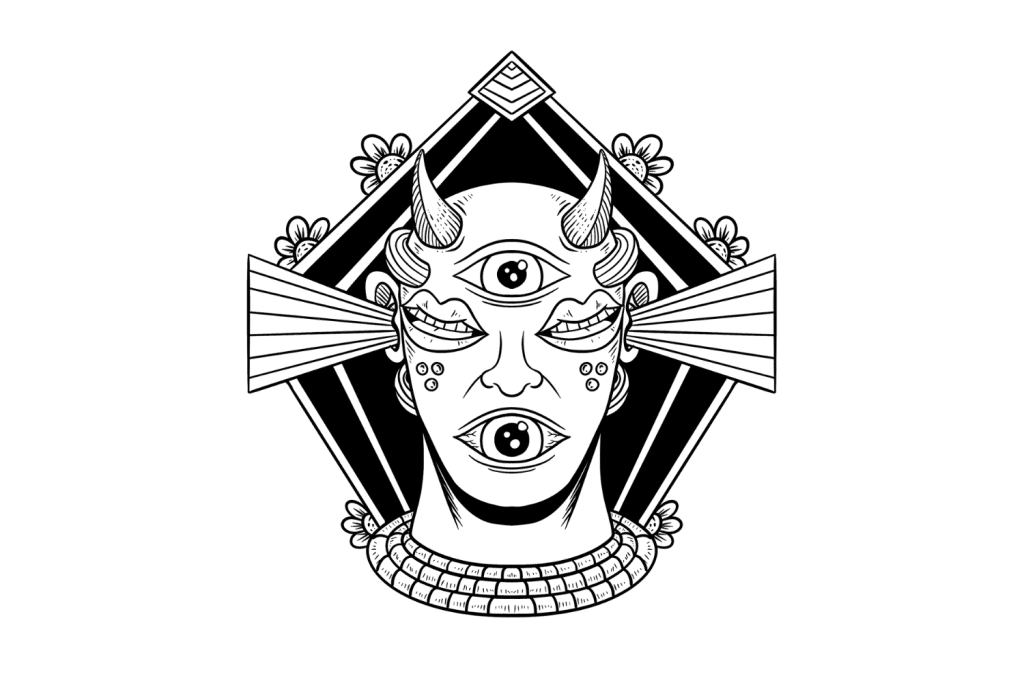
Emotional and philosophical content become strongly amplified, and perhaps feelings become confusing and contradictory. Past experiences may resurface along with profound insights about self and life.
Time can become meaningless; one may have out-of-body experiences or perceive paranormal phenomena like telepathy.
Level 5: Cosmic Convergence
This is a complete departure from everyday consensus reality. Sense ceases to function normally, and language or movement may be impossible.
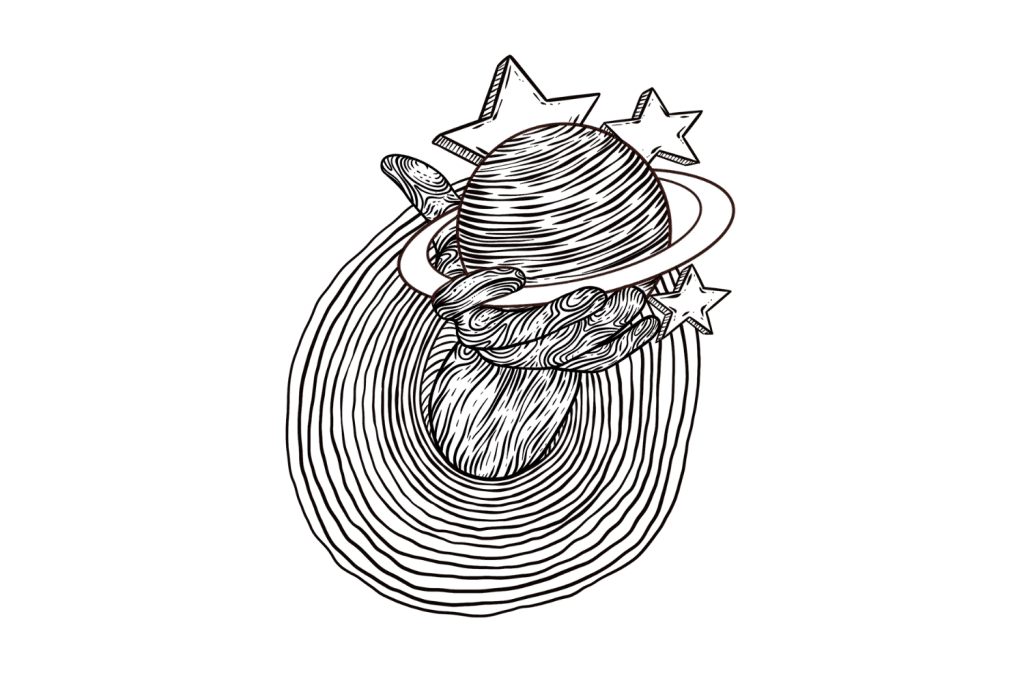
This is the level of ego death, oneness with the universe or God, or non-dual state. One may meet other beings, aliens, gods, or ancestors.
Other labels include satori, enlightenment, or peak experience. Time does not exist.
How Many Mushrooms Should I Take for Each Trip Level?
The dose of mushrooms for each person to reach every trip level will be different. Knowing your and your friend’s sensitivity to psilocybin will help you shoot for a specific trip level. Also, every batch of magic mushrooms is different, so be sure to establish how potent your shrooms are.
No trip level is “better” than any other, and learning how to navigate each one has its place in a psychonaut’s life. The lower levels are great for getting comfortable with psychedelics, using psychedelics for creativity, or being social.
The higher doses might be helpful for psychedelic therapy and personal or spiritual exploration. If you are going higher, get comfortable with lower doses first and have a trip sitter you trust.
That said, here’s a rough guideline to reach each trip level with dried mushrooms:
| Level 1 – “Threshold” | 0.5 – 1 gram |
| Level 2 – “Musem Dose” | 1 – 2 grams |
| Level 3 – “The Oracle” | 2 – 3 grams |
| Level 4 – “The Abyss” | 3 – 5 grams |
| Level 5 – “The Summit” | 5+ grams |
Other Ways to Measure The Mushroom Experience
Here are some of the other popular scales and systems trying to categorize magic mushrooms and other psychedelic experiences:
8-Circut Model of Consciousness (Tim Leary & Ralph Metzner)
Using the Tibetan Book of the Dead as a reference, Leary suggested traveling through “Three Bardos,” which are states between death and rebirth in Buddhism [1]. Later, Leary developed an 8-circuit model of consciousness that some apply to psychedelics in his book Info-Psychology [2].
5-Point Quantitative Potency Scale (Alexander Shulgin & Ann Shulgin)
The Shulgins, along with Peyton Jacob, developed a five-point “quantitative potency scale” to explore Shuglin’s many research chemical creations in PIHKAL: A Chemical Love Story [3]. Reports typically included the dose and narrative of the experience. The system uses (-, ±, +, ++, +++) with “-” having no effect and “+++” being a “peak” experience.

MEQ & APZ (Research Questionnaires)
Researchers employ many different scales and rating systems, like the Mystical Experience Questionnaire (MEQ), the Altered States on Consciousness Questionnaire (APZ), and many methods to attempt to quantify psychedelics. These are far more technical and designed for use in research [4].
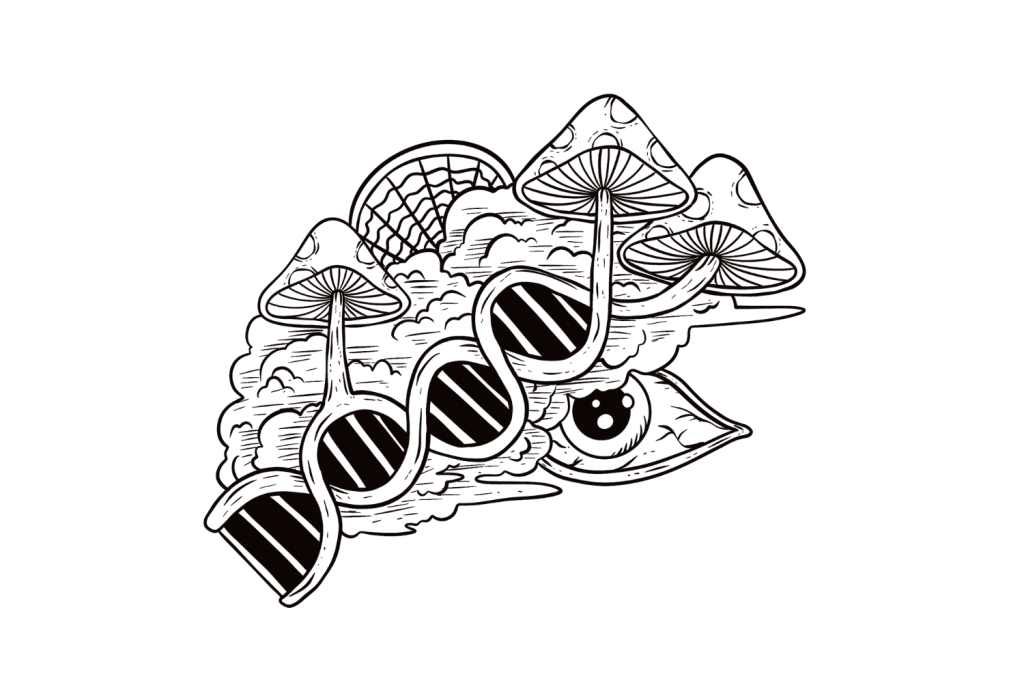
Mushroom Trip Level FAQS
If you still have questions, feel free to reach out to us at feedback@tripsitter.com.
1. Can You Experience More Than One Psychedelic Trip Level at the Same Time?
Yes, all the listed effects of each trip level are variable. The boundary between each level is not set in stone and is simply a rough guideline or reference point in the experience. It is nearly impossible to predict a psychedelic experience, and every trip can touch on several levels.
2. Does Set & Setting Affect Mushroom Trip Levels?
Set and setting affect every mushroom trip. Arriving at any given level is a combination of set, setting, and dose. A safe and comfortable setting is necessary for the higher levels, along with sound mental health and either a trip sitter or health professional present.
Each level can occur outside of the optimal setting, but navigating deeper states can require a level of surrender only achieved in the proper physical and mental space.
3. How Long Do Shroom Trip Levels Last?
A typical shroom trip lasts about 6-8 hours, with the peak of the experience lasting an hour or two. One trip will likely pass through several different levels. For example, levels 1 and 2 for about an hour, perhaps peaking at 3 for another hour or two and slowly going back down through the levels over another few hours.
Whatever level you are in, despite the altered perfection of time, will probably only last a couple of hours.
References
- Leary, T., Alpert, R., & Metzner, R. (2017). The psychedelic experience: A manual based on the Tibetan book of the dead. Citadel Press.
- Leary, T. (1987). Info-psychology. Nova York: New Falcon.
- Shulgin, A., & Shulgin, A. (1991). PiHKAL. Transform, Berkeley, p xxi.
- Preller, K. H., & Vollenweider, F. X. (2018). Phenomenology, structure, and dynamic of psychedelic states. Behavioral neurobiology of psychedelic drugs, 221-256.

